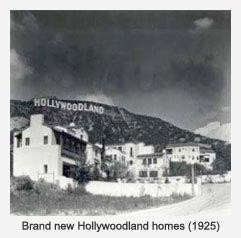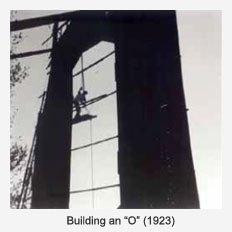Hollywood, more than just a city, embodies an entire industry, a lifestyle, and for many, a dream. This iconic status was officially cemented with the erection of the “Hollywoodland” sign in 1923. Initially conceived by Los Angeles Times publisher Harry Chandler as a grand $21,000 advertisement for his upscale Hollywoodland real estate venture, the Sign quickly transcended its commercial purpose, becoming a symbol for a city renowned for its spectacular premieres and constant self-promotion.
Confusion often arises regarding the precise origins of the Hollywoodland real estate development and the colossal electric sign that promoted it. However, delving into local newspapers of the era, including The Los Angeles Times, Holly Leaves, Los Angeles Record, Los Angeles Examiner, and the Hollywood Daily Citizen, clarifies any uncertainties. An advertisement for Hollywoodland in the Los Angeles Times from June 10, 1923, reveals the development’s launch in late March of that year. By June, it boasted 200 employees, 7 miles of newly constructed roads, and 300,000 cubic yards of earth moved.
Despite some sources incorrectly citing 1924 as the Sign’s birth year, the definitive date is 1923. The earliest documented mention of the Sign appears in a Holly Leaves article dated December 14, 1923. This article discussed the upcoming Mulholland Highway, planned to extend “…from the western end of the (Griffith Park) road, under the electric sign of Hollywoodland, around Lake Hollywood and across the dam.”
 Houses sit at the base of a hill with the Hollywoodland sign visible above, in black and white, showcasing the early development and the sign's prominent placement.
Houses sit at the base of a hill with the Hollywoodland sign visible above, in black and white, showcasing the early development and the sign's prominent placement.
Just two weeks later, the Los Angeles Times again featured the Sign in a December 30, 1923, article titled “Hollywood Electric Sign Reached by Car.” This piece recounted actor Harry Neville’s adventurous journey to test if a car could reach the Sign via the unpaved slope and if the vehicle’s brakes would function on the steep descent. The article described a “motley crowd of hillclimbers, workmen, salesmen and curiousity thrill-seekers…stood by with fear and trembling” as Neville navigated the loose terrain, ultimately returning safely to the “wide smooth roads of Hollywoodland.”
Another point of debate has been whether the Sign was initially built without lights, with the thousands of bulbs added later. However, historical photographs from the Bruce Torrence Hollywood Photograph collection, taken during the Sign’s construction, reveal workers handling sections of the Sign that include original lights within frames or “troughs.” Bruce Torrence, the collection’s curator, suggests that the shape of these light boxes indicates they were likely components of the letters “A” and possibly “L.”
By the close of 1923, the Hollywood Sign was complete, standing as a prominent, illuminated beacon for the rapidly expanding Los Angeles metropolis.
This “billboard” was indeed massive. Each of the original 13 letters measured 30 feet in width and approximately 43 feet in height. Their construction involved 3×9′ metal squares, interconnected by an elaborate framework of scaffolding, pipes, wires, and telephone poles. All of these materials had to be transported up the steep slopes of Mt. Lee by laborers using simple dirt paths.
Adding to its grandeur, a giant white dot, 35 feet in diameter and illuminated by perimeter 20-watt lights, was positioned below the Sign to further capture attention. The Sign itself was equipped with 4,000 20-watt bulbs, spaced 8 inches apart.
 A worker silhouette within the Hollywoodland sign's letter structure, emphasizing the scale and construction of the iconic letters during its original installation.
A worker silhouette within the Hollywoodland sign's letter structure, emphasizing the scale and construction of the iconic letters during its original installation.
At night, the Sign illuminated the Hollywood hills with a blinking sequence: first “Holly,” then “wood,” and finally “land,” culminating in a large period. This display was truly remarkable, especially by the standards of pre-Vegas visual spectacles.
Initially intended for a mere year and a half of existence, the Sign has not only endured but thrived for over eight decades, continuing to stand as a global symbol of Hollywood.
